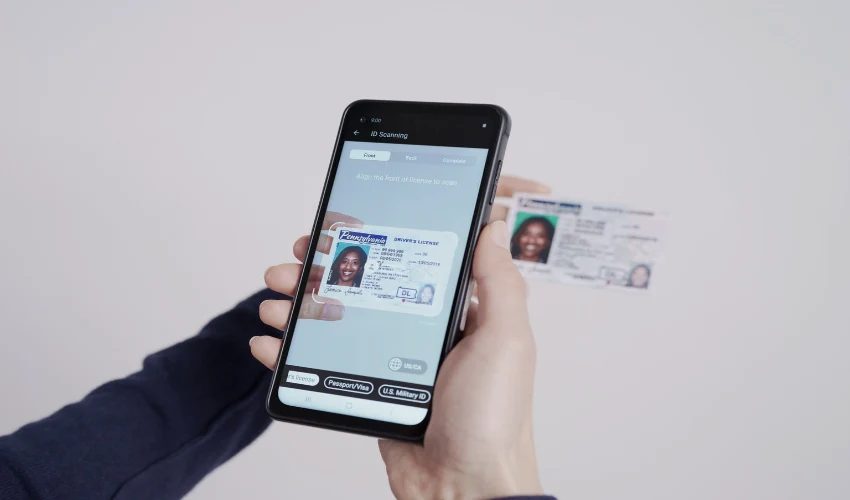Fake IDs have become increasingly sophisticated, making it harder to differentiate them from real ones. With technological advancements, many fake IDs now include scannable barcodes and magnetic strips that mimic real identification cards. However, there are several methods and techniques to identify a scannable fake ID. Here’s a comprehensive guide on how to spot these fraudulent documents effectively.
- Inspect the Physical Appearance
The first step in identifying a scannable fake ID is a thorough examination of its physical attributes. Look for:
- Font and Spacing Issues: Legitimate IDs have uniform and well-spaced fonts. Any inconsistency in text alignment or font size may indicate a fake ID.
- Holograms and UV Features: Most government-issued IDs have holograms or ultraviolet (UV) features that are difficult to replicate accurately. Use a UV light to check for these security elements.
- Material and Texture: Authentic IDs are made from high-quality materials, such as polycarbonate or Teslin. A flimsy or uneven texture could indicate a counterfeit.
- Verify the ID’s Information
Scannable ID often contain errors or inconsistencies that can be identified through careful scrutiny.
- Misspellings and Grammar Mistakes: Official documents do not contain typographical errors. Any misspellings or grammatical mistakes are red flags.
- Height and Weight Discrepancies: Compare the physical appearance of the cardholder with the details on the ID. If the listed height and weight do not match the person, it may be a fake.
- Unrealistic Birth Dates: Many fake IDs are used to bypass age restrictions. Check whether the birth date is suspiciously close to the legal age limit.
- Use an ID Scanner
A scannable fake ID often mimics the barcodes and magnetic strips of real IDs. However, advanced scanners can help detect fraudulent ones by revealing inconsistencies in the encoded data.
- Check for Mismatched Data: Scanning an ID should display the embedded information. If the details shown on the scanner do not match the printed information on the card, it is likely fake.
- Invalid Barcode Format: Some counterfeit IDs have barcodes that are incorrectly formatted or do not follow official standards.
- Missing Embedded Information: Genuine IDs contain detailed personal data, including full name, date of birth, and issuing state. A lack of encoded information is a strong indicator of a fake.
- Compare to a Genuine ID
If possible, compare the suspicious ID with a known genuine one from the same state.
- Color Differences: Fake IDs may have color variations that are slightly off from the official ones.
- Edge and Corner Details: Official IDs have precise edges and smooth finishes, while counterfeit ones may have rough or uneven edges.
- Microprinting and Watermarks: Many state IDs include microprinting and watermarks that are difficult to replicate. Use a magnifying glass to check for these details.
- Examine the ID’s Security Features
Government-issued IDs contain numerous security features to prevent counterfeiting. These include:
- Raised Printing: Genuine IDs often have raised printing that can be felt by touch.
- Laser Engraving: Some IDs use laser engraving techniques that counterfeiters find hard to replicate.
- Ghost Images: Some states include a secondary, translucent image of the cardholder that should match the main photograph.
- Look for Signs of Tampering
A fake idzone might be an altered genuine ID or one with added layers to deceive scanners.
- Overlay Issues: Counterfeiters may apply a fake laminate over an ID to add security features, but bubbles or misalignment can reveal the fraud.
- Photo Substitutions: Examine the edges of the photo to check for tampering.
- Mismatched Fonts: If different font types or sizes appear on an ID, it is likely altered.
- Ask Questions and Observe Behavior
If an ID seems suspicious, ask the cardholder some verification questions.
- Ask for Additional Identification: Request another form of ID, such as a student card or credit card, to compare information.
- Check the Cardholder’s Knowledge: Ask the person basic questions about the ID’s details, such as their zip code or birth year. If they hesitate or provide incorrect answers, it may be fake.
- Observe Nervous Behavior: Individuals using fake IDs often exhibit anxiety, avoid eye contact, or act defensively when questioned.
- Use a Blacklight for UV Features
Many real IDs have UV features that are only visible under blacklight. If an ID lacks these features, it could be counterfeit.
- Look for State-Specific UV Marks: Different states have unique UV patterns on their IDs.
- Check for Inconsistencies in UV Printing: Fake IDs may have blurred or missing UV elements.
- Consult an ID Verification Database
There are online databases and mobile apps that provide information on valid ID designs by state or country.
- Compare the ID with an Official Template: Many databases provide images of real IDs, which can be used for comparison.
- Use Verification Apps: Some apps allow you to scan barcodes and check for validity.
- Trust Your Instincts
If an ID seems suspicious despite passing some checks, it’s best to trust your instincts and request further verification.
- Deny Entry or Service if Necessary: If you are in a position to enforce ID verification, do not hesitate to refuse service or entry if the ID appears fraudulent.
- Report Suspicious IDs: Notify authorities or security personnel if you encounter a fake ID.
Conclusion
Identifying a scannable fake ID requires attention to detail and the use of proper tools. By closely inspecting physical features, verifying encoded data, using ID scanners, and cross-referencing with legitimate sources, you can effectively detect fraudulent IDs. Always stay vigilant and trust your judgment when dealing with suspicious identification documents.
